#beginnercalligraphy
Explore tagged Tumblr posts
Text
Starting Calligraphy as a Hobby: Joyful Artistic Discovery
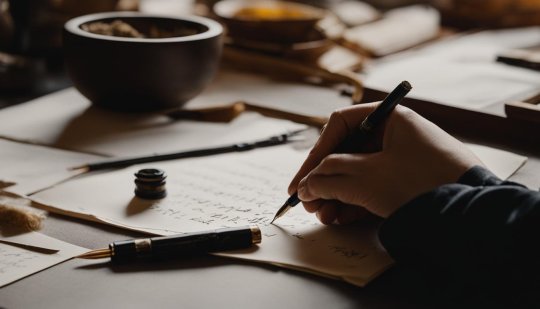
Starting Calligraphy as a Hobby: Uncover the Joyful Artistic Discovery of a Lifetime
Welcome to the world of calligraphy! If you have always admired beautifully crafted lettering and want to embark on a creative journey, starting calligraphy as a hobby is a wonderful choice. Calligraphy allows you to express your artistic side and create stunning works of art with just a pen and paper. In this section, we will explore the different stages of learning calligraphy, from the excitement of starting out to the sense of fulfillment when calligraphy becomes one of your core hobbies. Key Takeaways: - Approach calligraphy with a realistic attitude and be prepared for information overload. - Choose reliable learning resources, such as online courses or local workshops, to build your foundational skills. - Source the right calligraphy supplies, either through a starter kit or by putting together your own set of essential tools. Read the full article
0 notes
Text
Learn to write Happy Dhanteras in elegant calligraphy and cursive with ease! This video tutorial breaks down each stroke, guiding you step-by-step to create beautiful lettering, perfect for greeting cards, gifts, and festive decorations. Plus, discover the benefits of practicing calligraphy—improve focus, develop patience, and add a personal artistic touch to your Dhanteras celebrations. Ideal for beginners and anyone looking to enhance their writing skills. Watch now and make your holiday greetings truly unique!" @advaitamelearning
https://youtube.com/shorts/sj71YNK39Dg?feature=share
#CursiveWritingTutorial #youtubeshorts #HandwritingPractice #FestiveCalligraphy #LetteringArt #DhanterasGreeting
#DIYCalligraphy #BeginnerCalligraphy #HandwrittenCards #DhanterasCelebration
#festival #india
youtube
#HappyDhanteras Dhanteras2024 DhanterasCalligraphy advaitamelearning CursiveWriting FestivalCalligraphy IndianFestival#Youtube
1 note
·
View note
Photo

Hello, everyone! Here is my first post. If you’re unaware, I am a beginner calligrapher from the United States! I look forward to sharing my content with the world! #calligraphy_art #beginnercalligraphy #helloinstagram https://www.instagram.com/p/CYFwryota4a/?utm_medium=tumblr
1 note
·
View note
Photo

I thought this quote would be fitting for today. We can always rely on Good Omens to give us that spark of true positivity we need! 😂
Note that I am not exactly experienced with calligraphy, so the wonkiness is somewhat profound... But it's not too bad, would you say?
Here's to a better year!
Do Not Steal, Repost Or Edit Please! Share This Post If You Want To Share.
#good_omens#goodomensart#goodomensfanart#calligraphylettering#beginnercalligraphy#beginnercalligrapher#calligraphyquotes#quotecalligraphy#newyearart#letshopethisonesbetter#good omens#good omens fanart#good omens fandom#good omens boook#my art#art#quotes#calligraphy#quote calligraphy#calligraphy quotes#calligraphy quote
4 notes
·
View notes
Photo
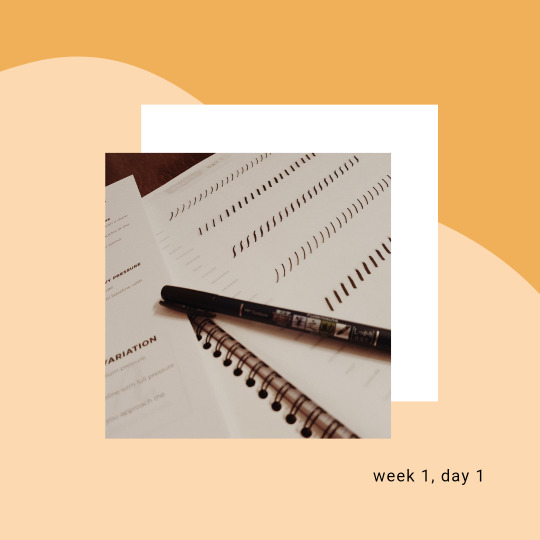
Just started on the Show Me Your Drills 2020 Challenge created by TheHappyEverCrafter on YT! First time I’m using a brush pen and using it for its intended purpose! Week 1, Day 1, cleared! Rocky start, but no-one starts out perfectly.
#showmeyourdrills#showmeyourdrills2020#calligraphychallenge#moderncalligraphy#beginnercalligraphy#handlettering#tombowfudenosuke#brushlettering#brushcalligraphy#studyblr
1 note
·
View note
Photo

I’m too beginner to write without guidelines. If I try erasing the guidelines after writing the golden powder in my favorite ink will be gone... So what I am going to try is writing with the normal blue ink first then put the Herbin’s ink after erasing the guidelines. #calligraphy #beginnercalligraphy https://www.instagram.com/p/B50NdtwAGcC/?igshid=1j4tnzjo2yy4x
2 notes
·
View notes
Photo

Happy International Women’s Day!!!🎀💃🌹💕💌🌸🌷. I love you all so much!🌟.
#caligraphy#calighraphybeginner#beginnercalligraphy#beginnercalligraphypractice#practice#caligraphypractice#fauxcalligraphy#brushlettering#brushletteringpractice#watercolor#watercolorlettering#pastelaesthetic#waterbrushpen#handlettering#handletteringpractice#lettering#brushpen#handwritingchallenge#pastelpink#internationalwomensday#womensday#happyinternationalwomensday
25 notes
·
View notes
Photo

Who is your favourite teacher ? ❣️ #gurupoornima 🙏 🏫 . . . #artsplik #artwork #calligraphy #handlettering #gurupoornima2018 #green #brushpens #pens #addgelbrushpens #beginnercalligraphy #teachers #respectteachers #bestteacher #goodteacher #teachersareawesome #teachersareheroes #artist #artistofinstagram #indianartist #instagood #friday
#artsplik#green#beginnercalligraphy#artwork#goodteacher#friday#instagood#pens#artistofinstagram#calligraphy#artist#teachersareawesome#respectteachers#brushpens#gurupoornima2018#bestteacher#handlettering#teachersareheroes#addgelbrushpens#teachers#indianartist#gurupoornima
0 notes
Text
Calligraphy Guideline Basics: Line Perfection Starts Here
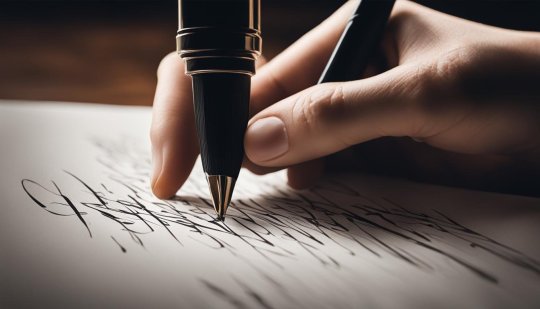
Calligraphy Guideline Basics: Master Line Perfection Instantly
Welcome to our comprehensive guide on calligraphy guideline basics. In this section, we will explore the fundamental concepts you need to know to achieve line perfection in calligraphy. Understanding calligraphy guidelines is essential for creating beautiful letterforms and developing your skills as a calligraphy artist. Before we dive into the details, let's take a moment to appreciate the artistry of calligraphy. Calligraphy is a timeless form of writing that combines artistic expression with precise lettering. It has been practiced for centuries and is celebrated for its elegance and beauty. Now, let's get started with the basics. Calligraphy guidelines provide the structure and framework for your letterforms. They act as a guide to help you maintain consistent letter heights, spacing, and proportions. By following these guidelines, you can achieve the desired line perfection that is characteristic of beautiful calligraphy. Throughout this guide, we will cover everything from understanding basic calligraphy strokes and practicing like a pro to choosing the right tools and overcoming common challenges. Whether you're a beginner or looking to enhance your existing skills, this guide will provide you with the knowledge and resources to succeed in the art of calligraphy. Key Takeaways: - Calligraphy guidelines are essential for achieving line perfection. - Understanding basic calligraphy strokes is crucial for creating cohesive letterforms. - Practicing calligraphy with the right tools and techniques is the key to improving your skills. - Differentiating between modern calligraphy and hand lettering allows for personal expression. - Overcoming common calligraphy challenges requires consistency and creativity.
Understanding Basic Calligraphy Strokes
Mastering basic calligraphy strokes is essential for beginners to develop their skills and create beautiful letterforms. These strokes serve as the building blocks for lowercase letters in calligraphy and form the foundation of the art. By understanding and practicing these strokes, you can achieve consistency and precision in your work. There are four main basic calligraphy strokes that you need to familiarize yourself with: - Downstroke: This is a vertical stroke that is thick and bold. It is created by applying pressure when moving the pen downwards. - Upstroke: This is a thin and light stroke that is created by moving the pen upwards without applying pressure. - Underturn: This stroke is curved and transitions smoothly from a thin to a thick line. It is commonly used in letters like "a", "d", and "g". - Overturn: This stroke is also curved but transitions from a thick to a thin line. It is commonly used in letters like "b", "p", and "o". By practicing these strokes individually and combining them in different ways, you can create a wide variety of letterforms and develop your own unique calligraphy style. Remember to start with light pressure and gradually increase it to achieve the desired thickness in your downstrokes. Consistency and practice are key to mastering basic calligraphy strokes and improving your overall technique. Stroke Type Examples Downstroke h, k, t Upstroke i, j, l Underturn a, d, g Overturn b, p, o Practice these basic calligraphy strokes regularly, focusing on achieving consistency and control. Experiment with different pressures and angles to create unique variations in your letterforms. By mastering these strokes, you will build a strong foundation for further exploration and experimentation in the world of calligraphy.
Practicing Calligraphy Like a Pro
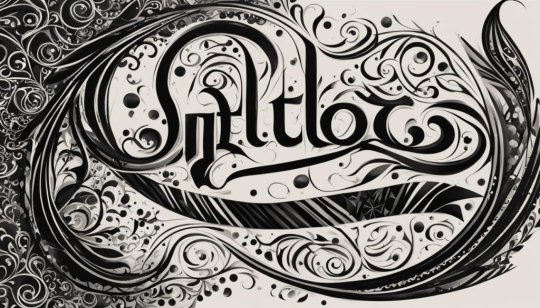
Are you ready to dive into the world of calligraphy? Starting a new artistic journey can be both exciting and intimidating, but with the right tips and techniques, you can practice calligraphy like a pro. In this section, we will guide you through the steps to get started and provide valuable insights to improve your calligraphy skills. Understanding the Difference: Calligraphy vs. Cursive Writing Before we delve into the techniques, let's clarify the difference between calligraphy and cursive writing. While cursive writing aims for speed and legibility, calligraphy is an art form that focuses on creating beautiful and expressive letterforms. In calligraphy, each stroke is intentional and deliberate, making it crucial to practice each stroke individually to achieve precision and consistency. To start your calligraphy journey, you will need some essential tools and materials. The most common tools include calligraphy pens, brush pens, ink, and paper. It's important to choose high-quality materials that suit your personal preferences and style. Additionally, practicing on calligraphy-specific paper or using practice sheets can help you develop better control and muscle memory. Practicing the Basic Strokes Now that you have your tools ready, it's time to practice the basic strokes. These strokes form the foundation for creating various letterforms. Start by mastering essential strokes such as the upward stroke, downward stroke, and curve. Practice each stroke individually, focusing on consistency and line weight. As you become more comfortable, you can move on to combining the strokes to create different letters. Remember, practice is key to improving your calligraphy skills. Dedicate regular time to practice and experiment with different styles and techniques. By following these tips and putting in the effort, you'll be well on your way to becoming a calligraphy pro!
Choosing the Right Calligraphy Tools
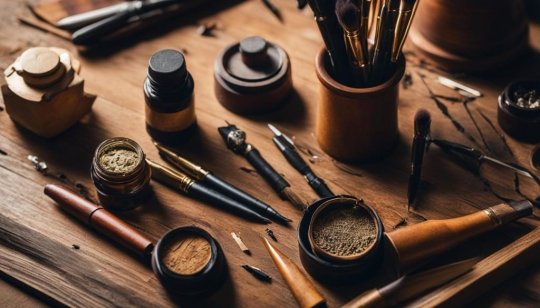
When it comes to calligraphy, selecting the right tools is crucial for achieving the desired results. Whether you're a beginner or an experienced calligrapher, having the right calligraphy pens and brush pens can make all the difference in your writing. Here, we will guide you on how to choose the perfect tools for your calligraphy journey. Calligraphy Pens Calligraphy pens come in various types, each offering unique features and effects. The two most common types are dip pens and fountain pens. Dip pens require a separate nib, which is dipped into ink, allowing for more control and customization in your strokes. Fountain pens, on the other hand, have an internal reservoir that holds the ink, providing a smoother writing experience. When choosing a calligraphy pen, consider factors like nib size, material, and flexibility to find the one that suits your style and comfort. Brush Pens Brush pens are a versatile tool for calligraphy, especially for creating bold and expressive lettering. They consist of a brush-like tip that mimics the effects of a traditional brush and ink. Brush pens are available in different sizes and stiffness levels, allowing for variation in stroke widths. They are perfect for both beginners and experienced calligraphers looking to add flair and dynamism to their writing. Experiment with different brush pens to find the one that best suits your desired style and level of control. Calligraphy Practice Sheets Practice sheets are essential for honing your calligraphy skills and improving your technique. These sheets provide guidelines for practicing different strokes, letterforms, and letter combinations. They help develop muscle memory and consistency in your writing. Additionally, practice sheets often include exercises to improve letter spacing, slant, and overall composition. Look for practice sheets that cater to your preferred calligraphy style, whether it's traditional, modern, or a specific script. Regular practice using these sheets will significantly enhance your calligraphy skills over time. Remember, choosing the right calligraphy tools is a personal preference, so don't be afraid to explore different options and experiment with various pens and brush pens. Additionally, dedicated practice using practice sheets will help you develop muscle memory and improve your overall calligraphy technique. With the right tools and regular practice, you'll be well on your way to creating beautiful, artistic lettering.
The Difference between Modern Calligraphy and Hand Lettering
If you're new to the world of calligraphy, you may have come across two terms that are often used interchangeably: modern calligraphy and hand lettering. While they share similarities, there are distinct differences between the two styles. Modern calligraphy is a contemporary take on traditional calligraphy. It embraces the foundational principles of calligraphy but allows for more freedom and personal expression. Modern calligraphy often incorporates elements of various lettering styles, creating a unique and artistic approach to letterforms. Hand lettering, on the other hand, refers to the art of drawing letters by hand. It encompasses a wide range of styles, including but not limited to calligraphy. Hand lettering allows for more flexibility in design and can incorporate embellishments, illustrations, and other graphic elements to enhance the overall composition. While modern calligraphy focuses on the beauty of letterforms and the rhythm of strokes, hand lettering expands beyond the realm of traditional writing and explores the integration of typography and illustration. Both styles offer endless possibilities for creativity and self-expression, making them popular choices among artists, designers, and those seeking to add a personal touch to their projects. Examples of Modern Calligraphy and Hand Lettering To further illustrate the distinction between modern calligraphy and hand lettering, here are some examples: "The art of modern calligraphy celebrates the elegance of letterforms through fluid and deliberate strokes. It combines the precision of traditional calligraphy with a contemporary twist." "Hand lettering is a form of artistic expression that allows for the creation of unique letterforms through illustrative elements and stylized typography. It invites experimentation and encourages the blending of different artistic mediums." Modern Calligraphy Hand Lettering Focuses on the beauty of letterforms Explores integration of typography and illustration Uses traditional calligraphy tools Allows for various artistic mediums Emphasizes precision and rhythm of strokes Encourages creativity and experimentation By understanding the difference between modern calligraphy and hand lettering, you can choose the style that best suits your creative vision and brings your ideas to life.
Overcoming Common Calligraphy Challenges
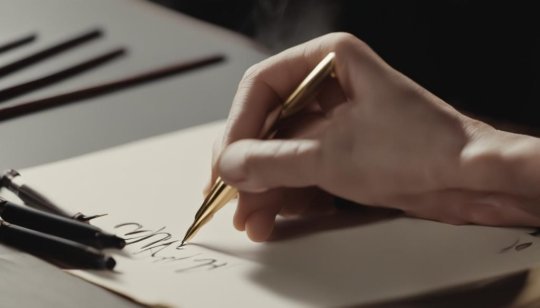
Improving your calligraphy skills can be both exciting and challenging. As you strive for consistency in your letterforms and aim to create beautiful pieces of art, you may encounter some common obstacles along the way. In this section, we will address these challenges and provide you with valuable tips and techniques to help you overcome them. Challenge 1: Achieving Consistency in Letterforms Consistency is key in calligraphy, and it can be a struggle to maintain uniformity in your strokes and letter shapes. To overcome this challenge, practice regularly and focus on mastering the basic calligraphy strokes. Pay attention to the angle and pressure of your pen or brush and strive for evenness in each stroke. Using guidelines or grids can also be helpful in achieving consistent letterforms. Challenge 2: Improving Overall Skill and Technique Calligraphy is a skill that requires constant improvement and refinement. To enhance your calligraphy technique, dedicate time to deliberate practice. Focus on specific aspects of your strokes and letterforms that need improvement and work on them systematically. Study the work of experienced calligraphers for inspiration and guidance, and don't be afraid to experiment with different styles and techniques to find your unique voice. Challenge 3: Finding Inspiration and Creativity in Calligraphy Calligraphy is not just about mastering the technical aspects; it's also about expressing your creativity and connecting with your artistic side. If you find yourself lacking inspiration, try exploring different calligraphy styles and experimenting with various tools and materials. Look for inspiration outside of calligraphy as well, such as nature, art, or literature. Remember that calligraphy is a journey, and finding your own creative path may take time and exploration. In conclusion, overcoming common calligraphy challenges is part of the learning process and an opportunity for growth. Embrace the journey, be patient with yourself, and continue to practice and improve. With dedication and perseverance, you will develop your calligraphy skills and create beautiful, expressive pieces of art.
History of Basic Calligraphy Strokes
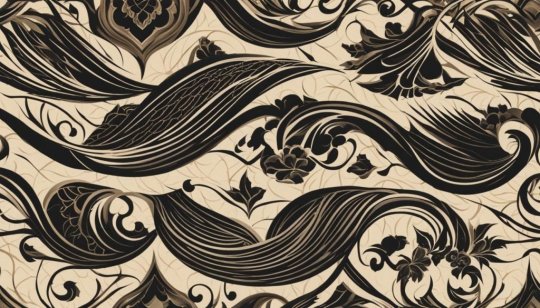
In this section, we will explore the fascinating history and evolution of basic calligraphy strokes. Understanding the origins of these strokes will provide valuable insights into the art form and enhance your appreciation for the techniques used in calligraphy today. Calligraphy has a rich history that dates back centuries. It has been practiced in various forms and styles across different cultures, each contributing to the development and refinement of calligraphy strokes. From the elegant brushstrokes of Chinese calligraphy to the precise penmanship of Western calligraphy, the evolution of these strokes showcases the creativity and skill of calligraphers throughout history. Throughout the ages, calligraphy strokes have been influenced by cultural, social, and artistic movements. Different regions and time periods have contributed their unique styles and techniques, resulting in a diverse range of calligraphy strokes. Additionally, the terminology used to describe these strokes has evolved over time, reflecting the changing understanding and appreciation of calligraphy as an art form. The Evolution of Calligraphy Strokes To better understand the history of calligraphy strokes, it's important to examine the key milestones and influences that have shaped their evolution. Here are some notable examples: Time Period Region Influence Ancient China China The development of brush calligraphy and the use of distinct brushstrokes for different characters. Islamic Golden Age Middle East Arabic calligraphy, characterized by fluid and intricate strokes, became highly regarded for its aesthetic and religious significance. Medieval Europe Europe The Gothic script, with its elaborate and ornamental strokes, gained popularity in manuscripts and religious texts. Japanese Edo Period Japan Japanese calligraphy, known as shodo, adopted its distinctive strokes and techniques influenced by Chinese calligraphy. By exploring the history of calligraphy strokes and the cultural contexts in which they emerged, we can gain a deeper understanding of the art form and find inspiration in the techniques of calligraphers of the past. "Calligraphy strokes have a rich and varied history, with each stroke holding cultural significance and artistic expression. By studying the evolution of calligraphy strokes, we can engage with the traditions of ancient civilizations and appreciate the timeless beauty of this art form." - Calligraphy Master
Practicing Calligraphy with Pencil and Paper
https://www.youtube.com/watch?v=kRZ3-rtXpDQ If you're a beginner looking to explore the art of calligraphy, practicing with pencil and paper can be a great way to start. This method offers accessibility and affordability, allowing you to hone your skills without investing in specialized tools. In this section, we will guide you through the process of practicing calligraphy with pencil and paper, providing tips and techniques to help you get started. Basic Calligraphy Supplies Before we dive into the practice techniques, let's take a look at the basic calligraphy supplies you'll need: - A pencil with a smooth lead - preferably an HB or 2B pencil - A calligraphy guideline sheet or a ruler to create your own guidelines - A smooth and high-quality paper, such as Bristol board or calligraphy practice paper - An eraser to correct any mistakes or smudges The Right Pencil Grip The correct pencil grip is crucial for achieving control and precision in your calligraphy strokes. Here are some tips to help you establish a proper grip: - Hold the pencil lightly between your thumb, index, and middle fingers. - Angle the pencil at a comfortable slant, allowing for smooth movement. - Keep your wrist loose and relaxed to avoid tension. - Practice writing short strokes and gradually build up to longer strokes. By practicing calligraphy with pencil and paper, you can develop a solid foundation for your letterforms and gain a better understanding of stroke consistency and control. Remember to be patient with yourself and practice regularly to improve your skills. With dedication and practice, you'll soon be creating beautiful calligraphy pieces using a variety of tools.
Brush Pen Calligraphy for Beginners
If you're looking to dive into the world of calligraphy but prefer a more versatile and beginner-friendly tool, brush pens are an excellent choice. These pens combine the ease of use of a marker with the ability to create beautiful brush-like strokes. Whether you're a complete beginner or have some experience with calligraphy, brush pens offer endless possibilities for creativity. When it comes to brush pen calligraphy, choosing the right pen is crucial. There are various types of brush pens available, each with its own unique characteristics. Some pens have a flexible brush tip that allows you to create both thick and thin strokes effortlessly, while others have a firmer tip that provides more control. Experiment with different pens to find the one that suits your style and preferences. Once you have your brush pen, it's time to explore different techniques to create gorgeous letterforms. Brush pen calligraphy offers the opportunity to experiment with variations in pressure, angle, and speed to achieve different effects. Practice creating thick downstrokes and delicate upstrokes, and experiment with letter spacing to add your personal touch to your calligraphy. Remember, practice is key when it comes to brush pen calligraphy. Set aside regular time to practice various letterforms, words, and phrases. You can find printable practice sheets online or create your own. As you gain confidence and proficiency, you'll be able to explore more advanced techniques and develop your unique style in brush pen calligraphy.
The Art of Pressure Control in Calligraphy
In the world of calligraphy, mastering the art of pressure control is crucial for achieving beautiful and balanced letterforms. Understanding how to apply the right amount of pressure to your pen or brush is what creates those elegant thick and thin strokes that bring your calligraphy to life. Read the full article
0 notes
Photo

5 Day Calligraphy Practice Challenge with Laura Hopper - DAY 5 Completed! #lhcpracticechallenge #beginnercalligraphy #calligraphy (at Millersville, Maryland)
0 notes
Photo

"Judging a person does not define who they are. It define who you are" . . . #handlettering #handletteringpractice #calligraphy #beginnercalligraphy #novicehandlettering #quotes #lettering
#handlettering#beginnercalligraphy#quotes#novicehandlettering#handletteringpractice#lettering#calligraphy
0 notes
Photo
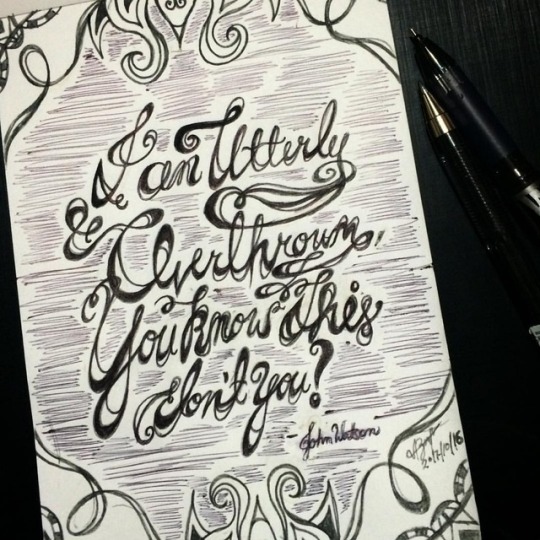
Inktober- day 16 Pilot fine and frixion ballpen on canson doodlepad. I've only been sparingly practicing for about a week now and I gotta say, calligraphy is hard hahaha The quote came from the Johnlock series by PoppyAlexander "Dawn before the rest of the world" on AO3. You can also order it as a hardcopy online(I certainly did hahaha) #LWBallpenCalligraphyChallenge #inktober #GPCWeeklyChallenge #calligraphy #ballpencalligraphy #fauxcalligraphy #practice #beginnercalligraphy #art #artwork #artwork2017 #inktoberph #artph #inktober2017 #flourishing #calligraphyflourishing #johnlock #johnlockfanfic #fanficrec #bbcsherlock #dawnbeforetherestoftheworld #poppyalexander
#inktober2017#johnlockfanfic#bbcsherlock#beginnercalligraphy#fanficrec#flourishing#calligraphy#johnlock#dawnbeforetherestoftheworld#fauxcalligraphy#art#calligraphyflourishing#artwork#practice#ballpencalligraphy#lwballpencalligraphychallenge#poppyalexander#inktober#artwork2017#artph#inktoberph#gpcweeklychallenge
0 notes
Photo

Used some of my glow in the dark ink! There's a misspelling there at the end whoops but overall I think I'm doing good. My hand isn't hurting so much. Light and Shadow is a theme I want to play with more. "Find me in the Shadow's arms See me at the end of the Light's rope Find me at the dark river bend Find me at the end of the Light's barrel See me filled with the darkest hope" #calligraphy #lefthandedcalligrapher #beginnercalligrapher #beginnercalligraphy #inktober #inktober2017
1 note
·
View note
Photo

did this one with a sharpie and some markers. You can get the same affect of a brush pen with a sharpie by making your down strokes thicker by coloring them in more. GREAT FOR BEGINNERS
1 note
·
View note
Photo

Still a little unbalanced letters... but with the guidelines I can write better. #calligraphy #beginnercalligraphy #begginerlettering #カリグラフィー https://www.instagram.com/p/B1TN9bdhmnG/?igshid=1gtzgc61ast5b
4 notes
·
View notes
Text
5 basic strokes for calligraphy

As many of you know, calligraphy is a well known visual art related to lettering. It is a masterpiece from a simple handwriting. It is used for designing invitation cards like weddings, birthdays, etc.
Now that you know what calligraphy is, get your materials ready and I’ll show you now the basic strokes for calligraphy
I’m going to use a pluspen (from miniso) and a small journal notebook as my paper in demonstrating the strokes of calligraphy
Here are the strokes that I’m gonna show you:
1. Up stroke
I know that lots of newbies are having a hard time doing the up stroke, but that’s okay. Even though your up stroke is a little bit shaky you can improve it by practicing it. I’ve been there, as well as the other who are good at calligraphy.
A post shared by Jennifer Dacumos (@junipeear) on Aug 16, 2017 at 4:58am PDT
TIP: Hold your pen 45 degrees inclined and make an up stroke with light pressure. This is the thin part of your lettering.
2. Down stroke
This stroke will be an easy one. This was one of my favorites strokes. And this is the really basic stroke. Don’t be afraid that your down stroke is too thick. Thick stroke may possibly result a good calligraphy.
A post shared by Nicole Dacumos (@junipeear) on Aug 16, 2017 at 5:02am PDT
TIP: Use more pressure when doing a down stroke. It is the thick part of your lettering.
3. Curve over
This is similiar to curve under but this one will a be the opposite of the curve under. It will start out as up and the curve down stroke.
A post shared by Jennifer Dacumos (@junipeear) on Aug 16, 2017 at 5:04am PDT
4. Curve under
This stroke will be like a letter U or V in lowercase form. It will start out as down and then curve up stroke. This might be a complex one.
A post shared by Jennifer Dacumos (@junipeear) on Aug 16, 2017 at 5:07am PDT
5.Curve over/under
This stroke will be a little bit hard. It is a mix of curve over and curve under stroke. Start with a curve over transitioning to curve under stroke. Up stroke first, then down and then up again.
A post shared by Jennifer Dacumos (@junipeear) on Aug 16, 2017 at 4:54am PDT
And that’s all for now. I hope that these 5 basic strokes that I have shown helped you improve your lettering. Just remember, up strokes are less pressure and then the down strokes are more pressure. Just keep practicing and you'll achieve your goal in calligraphy. Also, try doing the 30 day challenge like HappyLetteringChallenge to see the results of your improvements on lettering.
#calligraphy#brushcalligraphy#calligraphypractice#calligraphyph#beginnercalligraphy#lettering#handlettering#brushlettering
53 notes
·
View notes